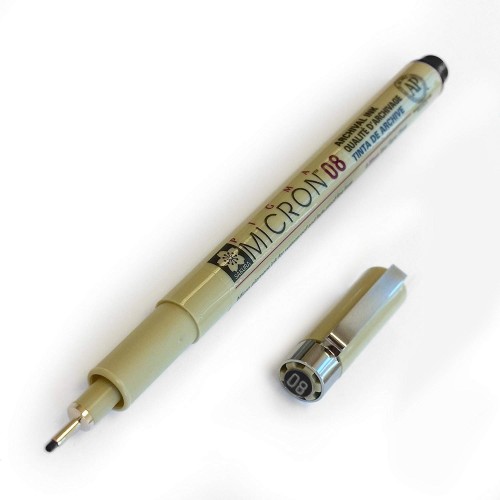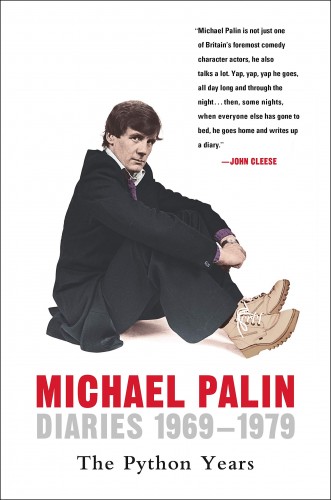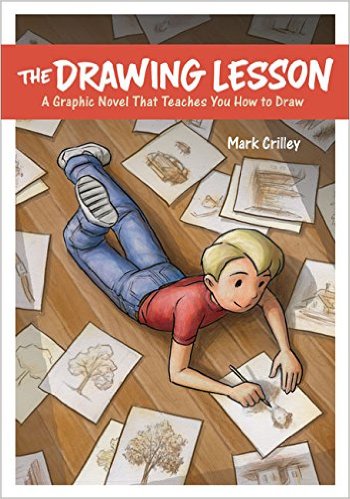Mark Crilley, Illustrator

Cool Tools Show 206: Mark Crilley
Our guest this week is Mark Crilley. Mark has written and illustrated more than 35 books and graphic novels, and is a 14-time Eisner nominee. His instructional YouTube videos have been viewed more than 380 million times. He lives in Michigan with his wife Miki and their children, Matthew and Mio. You can find him on Twitter @markcrilley.
Subscribe to the Cool Tools Show on iTunes | RSS | Transcript | See all the Cool Tools Show posts on a single page
Show notes:

Pigma Micron 08 Fineliner Pens ($7, 3pk)
First, I should say, that the primary attraction of the pen for me is that it is good waterproof ink. In my early years of drawing and sketching with ink, I made the mistake of using these water-soluble pens, and then just one little bit of saliva, or rainy day, and you can ruin a perfectly good drawing. I would say it’s thicker than most people would choose. People might be a little surprised that I’m drawing with such a thick-tipped pen. But what I’ve found, when you use a really fine point, you are locked into that one line width, whereas if you use something a little thicker, I think what they do with the Pigma Micron is, you go to 03, 05, 08, and it seems like they jump to those higher widths as you go along, in terms of options. When you go to those, you get the tip that’s a little wider, then when you press down, you get a good thick line, then you let up just a little bit, and it starts to get surprisingly thin. And for me, it’s really great to be able to switch back and forth, and indeed to get a single line that gets thicker at one point and then tapers off. Artists love that kind of thing. And this pen does a really great job of allowing you to do that.

Library Stand ($349)
For those of us who grew up with libraries, you probably will remember the days when they had a dictionary stand, where you could go, and they would have the really giant dictionary laid out in a way that it’s at a slight angle, and can be opened and flipped through by any of the library patrons. And I found by way of this catalog, I think it’s the Monticello catalog that is based out of Jefferson’s museum there, that they had this special library stand that presumably Thomas Jefferson used in his home, that has the same kind of angled rest at the top, that you can put a book on, with its pages open. And I’ve started to put art books on that rest that’s at the top of this bookshelf. I should say that it is in fact a bookshelf with three different shelves on it, where you can store books, and it’s only this top part that has an adjustable angle to it. But it’s perfect for pulling out these beautiful art books that may be collecting dust on the shelf. You open it up, and you can really start to enjoy these books on a day-to-day basis. Right now, I’ve got a book by an impressionist painter named Peter Brown, who works out of the beautiful city of Bath, England. And I supported his Kickstarter a couple of years ago and got this beautiful book from him. And so every day I can flip through, pretty much every page has one of these beautiful impressionist oil paintings that he created, and it allows me to enjoy this book for months if I choose, flipping from page to page, and newly appreciating this book that might otherwise be locked away from view. I’m a big fan of having your environment change a little every day or every month. Like with a calendar — a calendar allows you to change the decoration on your wall once every month. And this allows you to do the same thing more frequently. And I think we all have books, especially art books, that we really wish we would pull out and look at more often. And I think this piece of furniture allows you to enjoy it on a day-to-day basis. It really starts to enrich your life.

Kotatsu Japanese Heated Table ($226)
This would be close to a coffee table in height, for Americans. It’s quite low to the floor, and it has a heating implement built into the underside of the table. The upper surface of the table itself is separate from the legs and the lower surface that has the heating implement attached to it. So you can remove the upper surface and then you take a big, thick futon blanket and you drape it all the way over that lower section of the table, so that it covers the entire structure, and flows all the way down onto the floor. Then you take that upper surface, which really is just a simple square tabletop, and you put it on top of the blanket-covered structure, and then you switch on that heating implement, and you stick your feet underneath this table. In the winter time, it is just so nice to come in out of the cold, and you stick your legs and feet underneath the table and sit there. It requires being a little limber, because you’re sitting on the floor, you need to be able to fold your legs into the lotus position, I suppose, to sit at a table like this. And it’s basically our primary breakfast, lunch and dinner table.

Michael Palin Diaries ($22)
I love nonfiction: biographies, history, memoirs, and in this case, I’ve decided to recommend a diary, a series of diaries, actually, by the member of Monty Python, Michael Palin. I’m hoping that there are at least some Monty Python fans out there, that might consider checking this out. He began keeping a diary almost precisely at the moment that Monty Python was born, the six-member troop. And he was so good at literally keeping this up every single day, so that you can read, as the events unfolded, how it all came to be. He just has a real knack for writing. And his approach is very often to really put you there at the table. So, if he had lunch with John Cleese and Eric Idle, he’ll describe the food, he’ll describe the drink, he’ll describe the witty remark that John Cleese made, and then the even funnier thing that Eric Idle said in response. And you just feel like a fly on the wall, the way he writes it and captures it. And he’s quite frank at certain points. He’ll say when he’s annoyed by something that John Cleese has done, or some way that he feels slighted maybe, as a member of the gang. When I reached the end of reading this diary, I was so inspired, that I began to keep a diary myself. And this was 11 years ago, the year 2008 basically, was when I started keeping a diary. And for me, the main thing that I love about it, is that we all have these little memories, little uneventful things, that you just might forget, if you don’t make note of it. Some funny little moment, and my daughter at that time was right around a year old, she had not quite yet reached the age of one, I believe, when I started keeping the diary. And I was just thinking, boy, if I don’t make note of all these little things, I’m going to forget them as I fear I had done with my son who is seven years older, and I wasn’t keeping a diary at that time. So my approach really is to always try to think of these little things that happen during the day, or when you’re on the road somewhere, and you think, boy, I want to remember this. You know what I mean? I don’t want this to be lost to the sands of time. My theory is that when I go back and reread these things, those little moments will be unlocked, and I will be transported a little bit back to that day, that I might have forgotten otherwise.
Also mentioned:

The Drawing Lesson: A Graphic Novel that Teaches You How to Draw ($14)
This book was originally going to be called The Mentor, before we changed the title to The Drawing Lesson. And the original title maybe clues you into what my initial idea was. I was thinking, young artists, not all of them get the chance to have a good mentor, who shows them the ropes, and teaches them how to draw, and critiques them, points out to them things where they could improve. And I thought, if I did a graphic novel story in which the protagonist was a young kid who wants to learn how to draw, and meets an older artist that he can push into being his mentor — which becomes part of the humor of the story — that I can give people who read this story the sort of vicarious experience, of what it’s like to have a mentor, and take this idea of the instructional drawing book and marry it together with the idea of a graphic novel, to create something new.
We have hired professional editors to help create our weekly podcasts and video reviews. So far, Cool Tools listeners have pledged $390 a month. Please consider supporting us on Patreon. We have great rewards for people who contribute! If you would like to make a one-time donation, you can do so using this link: https://paypal.me/cooltools.– MF
12/27/19








